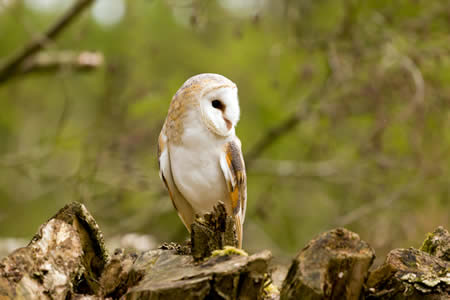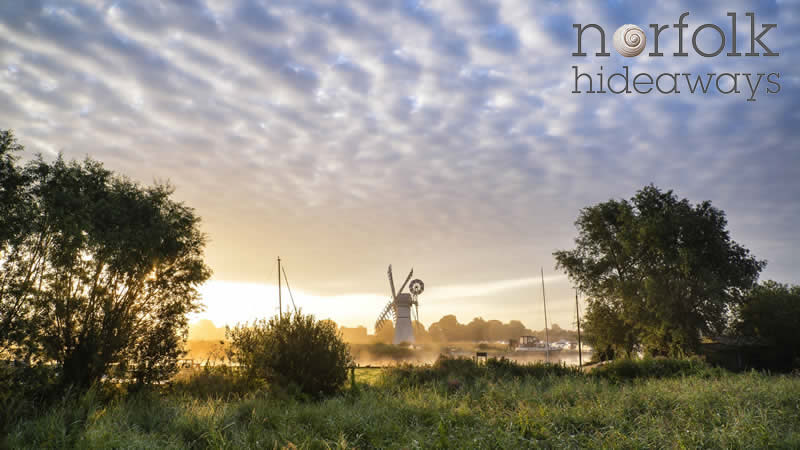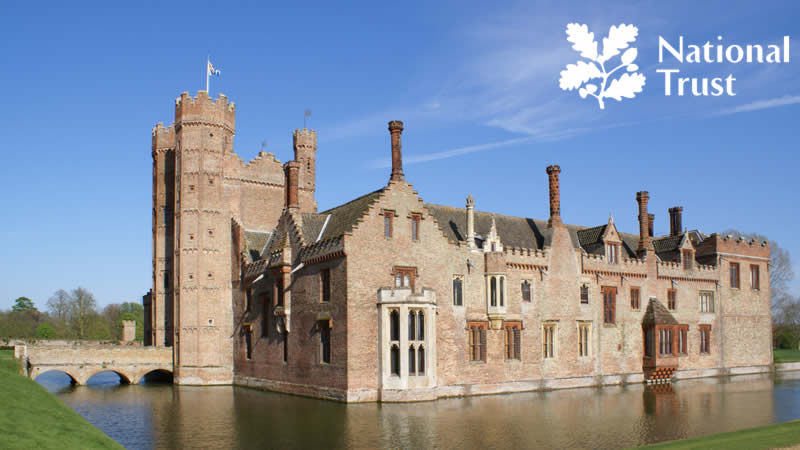Wildlife on the Norfolk Broads
The Norfolk Broads are made up of twelve large and twenty-four small lakes or meres. These broads, as they are known locally, are interlaced with rivers and dykes and play host to a spectacular array of wildlife. These range from fish to rare plants, insects to birds and mini-beasts to water-loving mammals.
The swallowtail, one of Britain’s most beautiful and rarest butterflies, can now only be found in the Norfolk Broads. It is the UK’s largest butterfly with a three inch wingspan and very distinctive markings. The male and female are very similar in colour, but the female is larger. The caterpillars feed on milk parsley which grows amongst the reeds and when fully grown they are a vibrant green with black and orange markings. During May, the pupa generally hatches and it can be seen fluttering around on a sunny day.
Many varieties of dragonfly make their home on the Norfolk Broads. It is a very colourful insect that is completely harmless to humans and which is fascinating to watch. The shy otter and water vole are also inhabitants of the broads and can occasionally be seen swimming or scurrying about.
The broads are a haven for bird life and attract birdwatchers from afar. The bearded tit, or bearded reedling as it is also known, is mainly confined to the reed beds of East Anglia. It climbs the reed stems nimbly and builds its nest low down in the reeds. It feeds on insects and reed seeds and the male has a very distinctive black facial stripe and a blue-grey cap.
The coot can be widely found on the broads and has a plump sooty-grey body and black head, and a white bill and white frontal plate. It makes its nest from dead reeds at the reed bed edge and defends its territory fiercely.
The snipe builds its nest on the broads, preferring dense vegetation to conceal its brood. It is a medium-sized wader, with a long straight bill, rather dumpy body, short legs and a striped head and body. It is most likely to be in flight at dusk.
The redshank, also a wader, prefers to nest in areas such as the broads. It has red legs and bill-base, with brownish plumage and streaked breast and flanks.
The broads are home to the sedge and reed warblers. The sedge warbler builds its nest in rushes, long grass or reeds, positioning it low down in the dense vegetation. It is a buff and brown coloured bird with a pointed head and dark streaked crown and cheeks. The reed warbler makes its nest in similar surroundings and its nest is basket shaped which is woven around a few reed stems. Brownish in colour with a lighter rump, it hops among reed stems, blending in well with its habitat.
The great crested grebe breeds on reeded waters such as the broads and its nest is made from a large mound of reed stems. The largest and most familiar grebe, it has a long low body and long slender neck. In the summer it has an unmistakable head plumage which it vigorously shakes in courtship displays.
The bittern, with a wingspan of between 100-130cm, breeds solely in reed beds. It feeds mainly on fish, frogs and insects and its nest is made from dead reeds built at water-level. It is a large buff-brown bird and is a relative of the heron, with loose throat feathers and comparatively short legs. It is rarely seen on the ground as it stays hidden in the reed beds. The male has a very distinctive song which is a foghorn-like booming sound which can travel up to 5km on a calm night.
Whether travelling through the broads by boat, on foot or by bicycle, you will be delighted by the abundance of wild flowers. There are the unobtrusive spring flowers like the delicate ragged robin and cuckoo flower, or the showier blooms like the lily, willow herb and loosestrife. Then there are figworts and burr marigolds all with their own individual charm. You can find flowers that were said to have medicinal powers such as the common valerian; its delicate cluster of pale pink flowers often goes unnoticed but it was said to be so successful in treating cuts and infections that it was given the name “all heal”. This was also used as a sedative and valerian root was used to bait rat traps as it was thought to be irresistible to rodents! Meadowsweet, a pretty flower, was used during the 19th century as an aromatic floor covering. It was also said to induce headaches, so seems rather an odd choice of flooring.



The finest holiday cottages & self-catering accommodation in Norfolk.
Book with Norfolk Hideaways
Find & Book
Major's Lodge
, Norfolk
If you are looking for something unique and rather special, then book a stay in Major's Lodge, a safari lodge overlooking the lakes and plains of the Watatunga Wildlife Reserve. With stunning vistas over the grazing herds of exotic deer and antelope species and with exclusive use of an electric self-drive buggy to explore the reserve, this hideaway is a truly unique staycation destination.

Duffields Cottage
, Norfolk
A fabulous single storey barn-style cottage tucked away in a discrete location situated right in the heart of Brancaster, one of North Norfolk's prettiest and most popular coastal villages. Within easy walking distance of the beautiful beach and excellent local pub, Duffields Cottage is the perfect hideaway for couples, friends or a small family to enjoy both a short break, and longer stay, any time of the year.

Mill House Cottage
, Norfolk
Tucked away in Brancaster in an Area of Outstanding Natural Beauty, Mill House Cottage offers the opportunity to enjoy residing in one of the most beautiful villages on the North Norfolk coast. Boasting a glorious beaches, with miles and miles of unspoilt golden sand, Brancaster is a popular destination throughout the year. Updated and extended by the owners in 2023, this delightful cottage is a super retreat for a relaxing break, ideal for a couple or a small family.
The Norfolk Wildlife Trust - Wildlife Conservation in Norfolk
The Norfolk Wildlife Trust is the oldest Wildlife Trust in the country and aims to provide hands-on, learning experiences to develop knowledge, understanding and enjoyment of the natural world. 400 acres of marshland at Cley, on the north Norfolk coast, was purchased in 1926 to be held ‘in perpetuity as a bird breeding sanctuary’. This has provided a blueprint for nature conservation which has since been replicated the length and breadth of the UK.
The Marsh Harrier is a Norfolk Success Story
The marsh harrier is the largest of the harriers and is recognisable by its long tail and light flight with wings held in a shallow ’V’ formation. Females are larger than the males and have distinctive golden-yellow crowns and throat and chocolate-brown feathers. Males are lighter in colour and have a brown back, pale neck and head, gingery belly and long grey wings with black tips. In recent years the marsh harrier population has increased, and in Norfolk, it is not unusual to see this beautiful bird in flight.
Spotting the elusive Bittern in Norfolk
The bittern is one of the rarest breeding birds in the UK, it is very well camouflaged and spends all year round in Norfolk, making its home in reedbeds on the Norfolk Broads. The male has a very distinctive booming call, that it uses to attract a mate, and this can be heard up to 2km away between March and June.
See the Swallowtail Butterfly in Norfolk
The Swallowtail Butterfly, Papilio Machaon Britannicus is a large, strong and colourful butterfly that forms part of the Papilionidae family. The largest native UK butterfly, with a wingspan of up to 9cm, it is also one of the rarest. The Swallowtail Butterfly has very distinctive yellow and black markings and if you are lucky enough to spot one in flight, it’s a beautiful sight to behold.
Useful links

http://www.visitthebroads.co.uk/
Broads National Park, The official visitor website for the Norfolk and Suffolk Broads

http://www.broads-authority.gov.uk/
The Broads National Park with its scenic waterways, rare wildlife and rich history is looked after by The Broads Authority, keeping it special for visitors and its community










